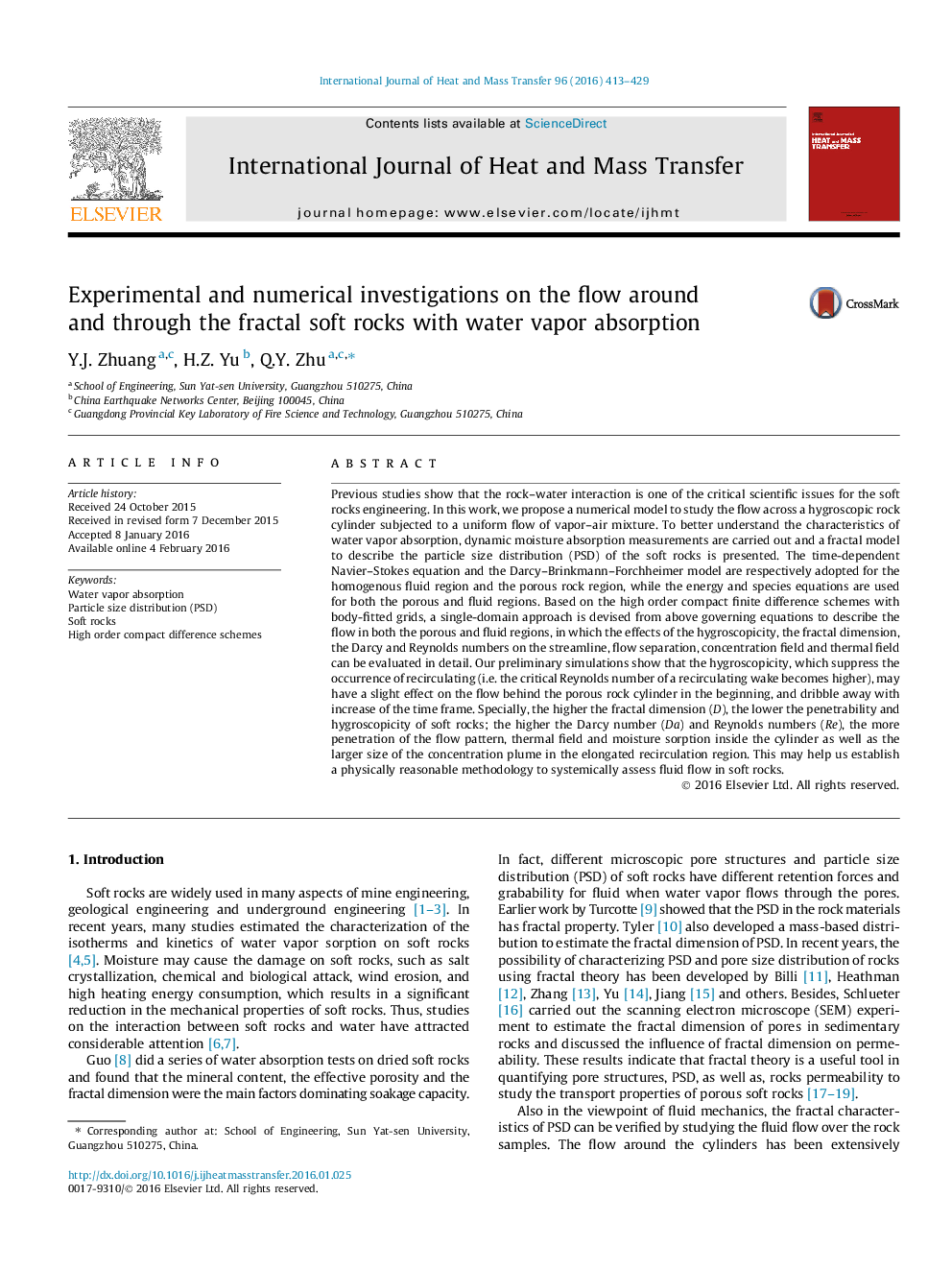| Article ID | Journal | Published Year | Pages | File Type |
|---|---|---|---|---|
| 7055874 | International Journal of Heat and Mass Transfer | 2016 | 17 Pages |
Abstract
Previous studies show that the rock-water interaction is one of the critical scientific issues for the soft rocks engineering. In this work, we propose a numerical model to study the flow across a hygroscopic rock cylinder subjected to a uniform flow of vapor-air mixture. To better understand the characteristics of water vapor absorption, dynamic moisture absorption measurements are carried out and a fractal model to describe the particle size distribution (PSD) of the soft rocks is presented. The time-dependent Navier-Stokes equation and the Darcy-Brinkmann-Forchheimer model are respectively adopted for the homogenous fluid region and the porous rock region, while the energy and species equations are used for both the porous and fluid regions. Based on the high order compact finite difference schemes with body-fitted grids, a single-domain approach is devised from above governing equations to describe the flow in both the porous and fluid regions, in which the effects of the hygroscopicity, the fractal dimension, the Darcy and Reynolds numbers on the streamline, flow separation, concentration field and thermal field can be evaluated in detail. Our preliminary simulations show that the hygroscopicity, which suppress the occurrence of recirculating (i.e. the critical Reynolds number of a recirculating wake becomes higher), may have a slight effect on the flow behind the porous rock cylinder in the beginning, and dribble away with increase of the time frame. Specially, the higher the fractal dimension (D), the lower the penetrability and hygroscopicity of soft rocks; the higher the Darcy number (Da) and Reynolds numbers (Re), the more penetration of the flow pattern, thermal field and moisture sorption inside the cylinder as well as the larger size of the concentration plume in the elongated recirculation region. This may help us establish a physically reasonable methodology to systemically assess fluid flow in soft rocks.
Related Topics
Physical Sciences and Engineering
Chemical Engineering
Fluid Flow and Transfer Processes
Authors
Y.J. Zhuang, H.Z. Yu, Q.Y. Zhu,
